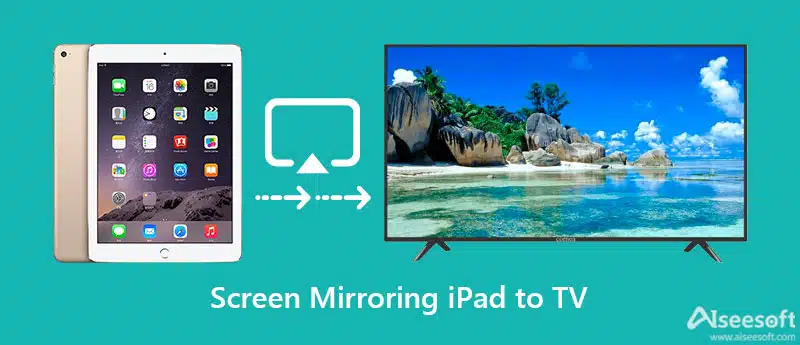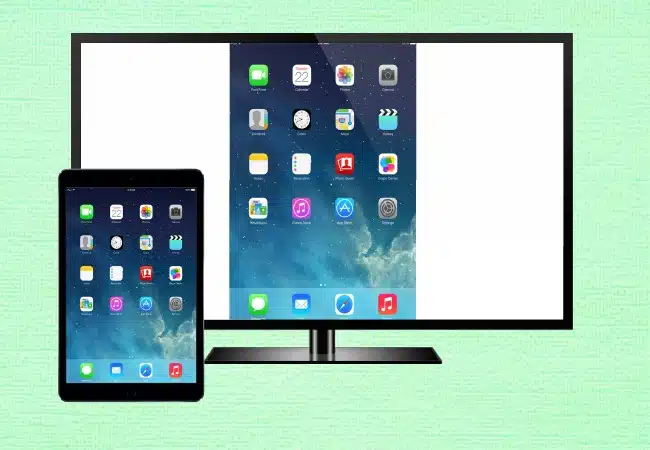Table of Contents
How to Mirror Your iPad to a TV?
Screen Mirroring iPad To TV? Screen Mirroring iPad To TV allows you to display what’s on your iPad’s screen to a compatible TV or projector. It works with Apple TV, select LG and Samsung TVs, and Roku devices that support AirPlay.
To start, swipe down on your iPad to reveal Control Center and tap the screen mirroring icon, which resembles two boxes next to each other.
AirPlay:
Apple’s wireless AirPlay protocol enables screen mirroring on compatible TVs and speakers. It was first released in 2010 and gained a big upgrade with AirPlay 2, which launched in 2018. AirPlay supports audio, video, photo, and other content — plus centralized streaming and control.
It’s easy to connect your iOS device to an AirPlay-compatible TV. Just bring up Control Center on your iPhone X or later, iPad Pro or newer, or iPad with iOS 13, and tap the AirPlay button that appears (it looks like a square with a triangle in the bottom center). From there, choose the TV you want to stream to. If prompted, enter the code displayed on the TV to pair the devices.
You can also use AirPlay to show what’s on your iOS device screen on your Mac computer. It’s a little tricky to get set up, but it works well once everything is configured. On a Mac running the latest version of OS X, open System Preferences and check the option to display mirroring options in the menu bar when available.
When you’re using an app that supports AirPlay, look for the “AirPlay” icon — two rectangular screens slightly overlapping each other — in the top-right corner of the screen. Tapping this button shows a list of all available video AirPlay devices, such as an Apple TV or compatible Mac, and lets you select the one you want to use.
HDMI:
One of the most popular ways to mirror an iPad to a TV is via HDMI. This setup allows you to enjoy a wide range of content on a larger screen, such as movies, games, and presentations. To connect your iPad to a TV using HDMI, you’ll need a compatible cable and adapter (if necessary), power on both devices and switch the TV to the correct input source.
Before connecting your iPad to a TV via HDMI, ensure that it is running iOS 11 or later and is connected to the same wireless network as the TV. Also, make sure that your TV supports HDCP (High-bandwidth Digital Content Protection). Using an HDMI cable with a TV that doesn’t support HDCP can result in video quality issues when streaming copyright-protected content.
To start mirroring your iPad to a TV, first unlock it and ensure that it is on the home screen. Then, open the Control Center and tap on the “Screen Mirroring” button. Next, select the TV from the list of available devices and tap “OK.” Finally, disconnect your iPad when finished with it.
If you experience any issues, try restarting your TV or using a different cable. You can also contact the manufacturer of your TV for further assistance. In addition, if you’re using a third-party adapter, be sure to use one that has been certified by Apple.
Lightning Digital AV Adapter:
If you have an iPad or iPhone that supports the Lightning Digital AV Adapter, you can use it to mirror the iPad screen to the TV. This works with any HDMI-compatible TV, projector, or monitor. Connect the Lightning Digital AV Adapter to your iOS device and an HDMI cable (sold separately) to your TV or display. Then turn on the TV and select its HDMI input.
To mirror your iPad, open Control Center on your iOS device and tap the Screen Mirroring button. You may be prompted to enter an AirPlay passcode on your TV. When you’re done, select the iPad from the list of devices in the Control Center and tap Stop Mirroring.
Apple’s Lightning Digital AV Adapter is a great accessory, but it has its problems. First, it’s expensive — $49 plus a separate Lightning to USB Cable and a $19 wall adapter. It also lacks a standard HDMI port, which means you can only mirror your iPad to a TV with an HDMI cable. The Lightning connector’s position on the adapter is likely to cause it to flex under stress, which can eventually lead to a failure in the soldered connection. This is a problem that should be addressed by Apple. The solution could be to put the connector further back on the adapter or to make a longer Lightning cable that puts the connector closer to the edge of the adapter.
Third-Party Apps:
There are a few third-party apps that can help you screen mirror iPad to TV without an Apple TV. One example is the free ‘Mirror for Chromecast or Android TV’ app by AirBeamTV. The app works with most Android smart TVs, media set-top boxes, and streaming players from brands such as Samsung, LG, VIZIO, and Sony.
The app uses your local Wi-Fi network to connect your device to the TV. The only prerequisite is that both your TV and iPad are on the same Wi-Fi network. Once the connection is made, you can play videos and photos on the TV, display a slideshow of your favorite pictures, or communally browse social media.
Another option is to use a third-party mirroring app such as AirBeamTV, which can work with most smart TVs including Samsung, LG, VIZIO, and Sony. The app uses your local Wi-Fi network and can be installed on both Mac and Windows computers.
The process is relatively simple. On your iPad, swipe up from the bottom of the screen to open the Control Center. Tap the AirPlay icon and select your TV from the list of compatible devices. You may need to enter an AirPlay passcode if prompted. Once the connection is established, you can control the TV with the tablet’s remote. Some caveats apply: there is often a delay in video performance, and you’ll have to sit through an ad on your iPad unless you upgrade to the paid version of the app.






Add comment